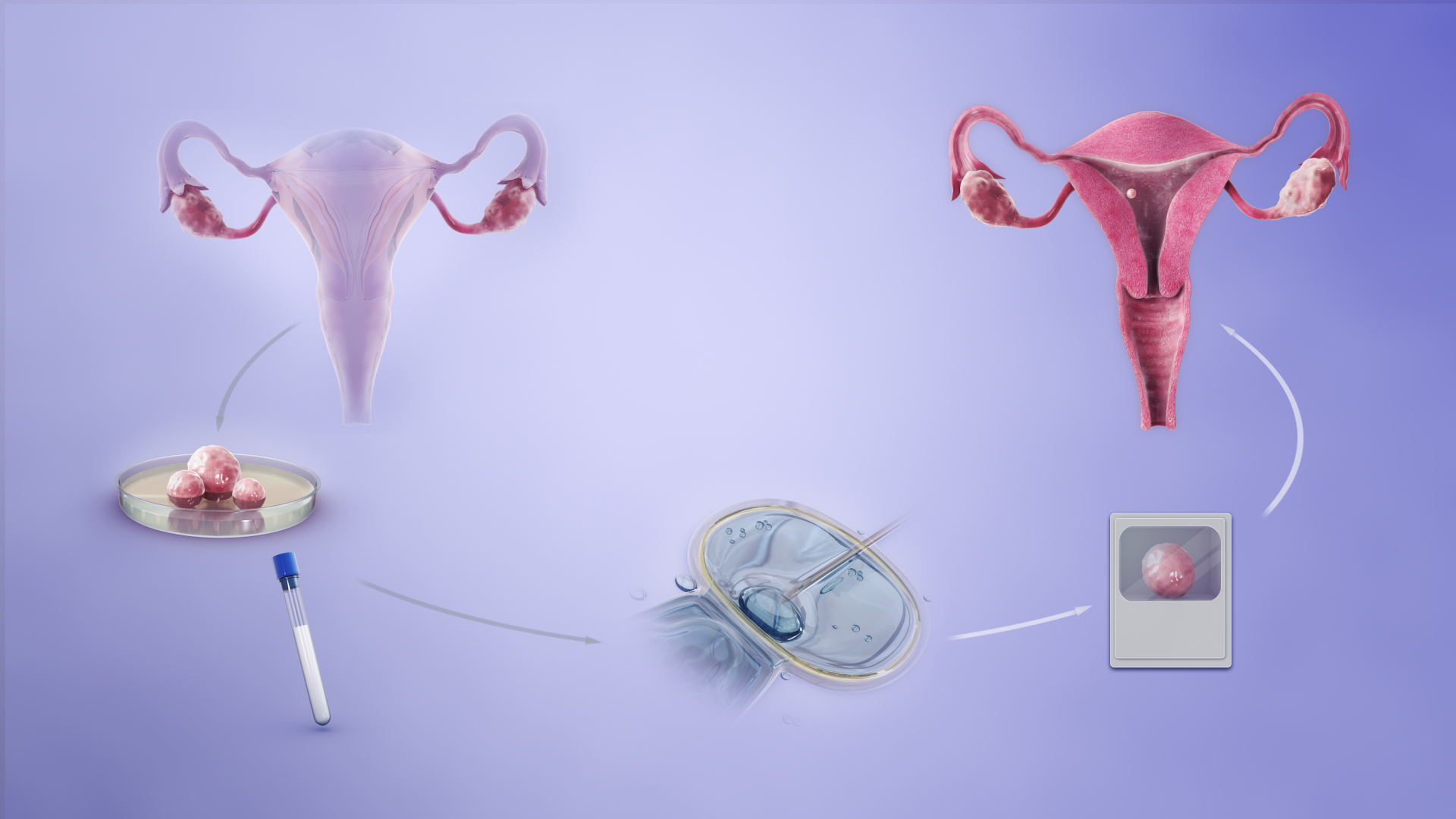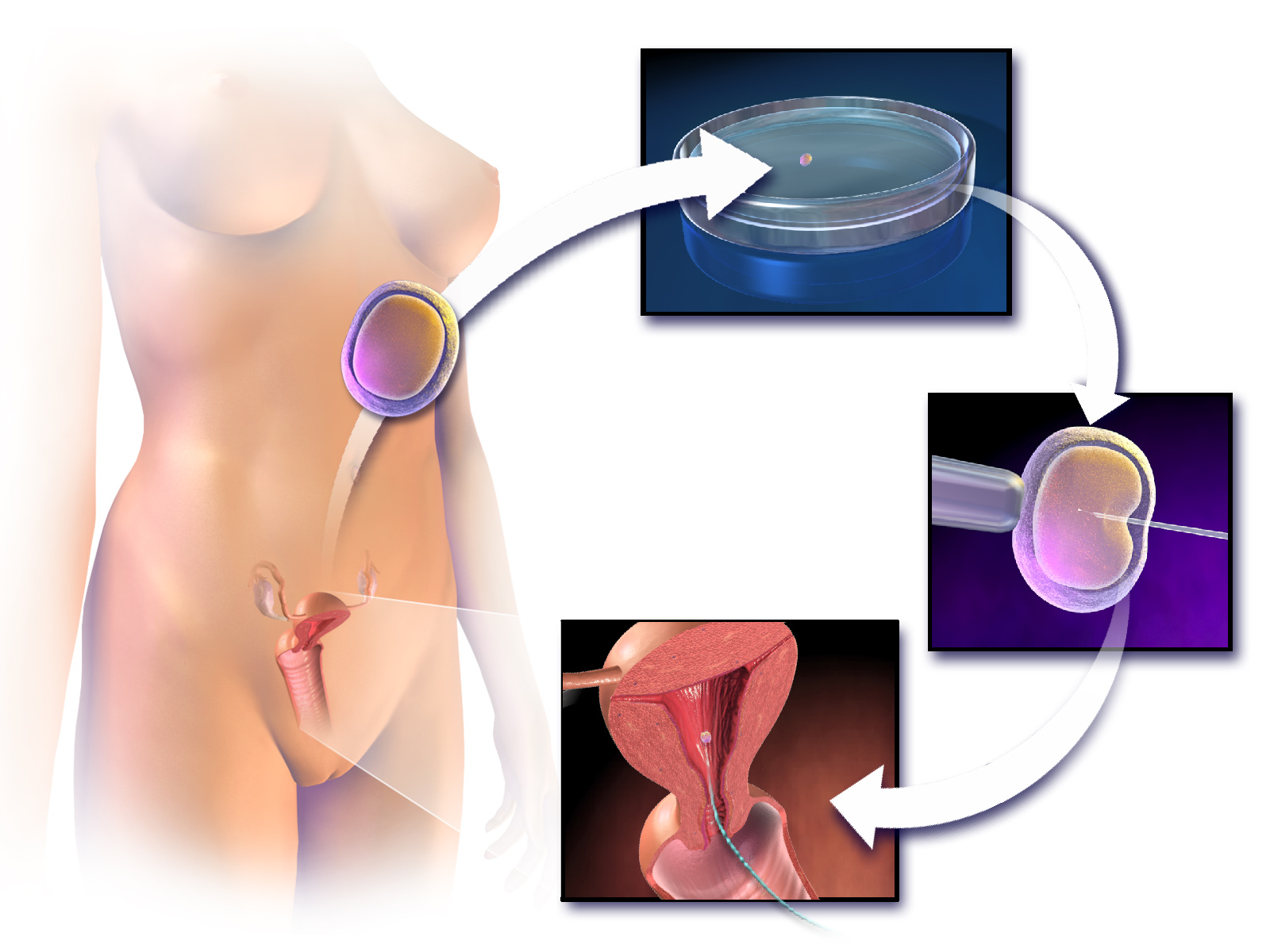|
Assisted Reproductive Technology
Assisted reproductive technology (ART) includes medical procedures used primarily to address infertility. This subject involves procedures such as in vitro fertilization (IVF), intracytoplasmic sperm injection (ICSI), and cryopreservation of gametes and embryos, and the use of fertility medication. When used to address infertility, ART may also be referred to as fertility treatment. ART mainly belongs to the field of reproductive endocrinology and infertility. Some forms of ART may be used with regard to fertile couples for genetic purpose (see preimplantation genetic diagnosis). ART may also be used in surrogacy arrangements, although not all surrogacy arrangements involve ART. The existence of sterility will not always require ART to be the first option to consider, as there are occasions when its cause is a mild disorder that can be solved with more conventional treatments or with behaviors based on promoting health and reproductive habits. Procedures General With ART, ... [...More Info...] [...Related Items...] OR: [Wikipedia] [Google] [Baidu] [Amazon] |
Infertility
In biology, infertility is the inability of a male and female organism to Sexual reproduction, reproduce. It is usually not the natural state of a healthy organism that has reached sexual maturity, so children who have not undergone puberty, which is the body's start of fertility, reproductive capacity, are excluded. It is also a normal state in women after menopause. In humans, ''infertility'' is defined as the inability to become pregnant after at least one year of unprotected and regular sexual intercourse involving a male and female partner. There are many causes of infertility, including some that Assisted reproductive technology, medical intervention can treat. Estimates from 1997 suggest that worldwide about five percent of all heterosexual couples have an unresolved problem with infertility. Many more couples, however, experience involuntary childlessness for at least one year, with estimates ranging from 12% to 28%. Male infertility is responsible for 20–30% of infert ... [...More Info...] [...Related Items...] OR: [Wikipedia] [Google] [Baidu] [Amazon] |
In Vitro Fertilization
In vitro fertilisation (IVF) is a process of fertilisation in which an egg is combined with sperm in vitro ("in glass"). The process involves monitoring and stimulating the ovulatory process, then removing an ovum or ova (egg or eggs) from the ovaries and enabling sperm to fertilise them in a culture medium in a laboratory. After a fertilised egg (zygote) undergoes embryo culture for 2–6 days, it is transferred by catheter into the uterus, with the intention of establishing a successful pregnancy. IVF is a type of assisted reproductive technology used to treat infertility, enable gestational surrogacy, and, in combination with pre-implantation genetic testing, avoid the transmission of abnormal genetic conditions. When a fertilised egg from egg and sperm donors implants in the uterus of a genetically unrelated surrogate, the resulting child is also genetically unrelated to the surrogate. Some countries have banned or otherwise regulated the availability of IVF treatme ... [...More Info...] [...Related Items...] OR: [Wikipedia] [Google] [Baidu] [Amazon] |
Preimplantation Genetic Diagnosis
Preimplantation genetic diagnosis (PGD or PIGD) is the genetic profiling of embryos prior to implantation (as a form of embryo profiling), and sometimes even of oocytes prior to fertilization. PGD is considered in a similar fashion to prenatal diagnosis. When used to screen for a specific genetic disease, its main advantage is that it avoids selective abortion, as the method makes it highly likely that the baby will be free of the disease under consideration. PGD thus is an adjunct to assisted reproductive technology, and requires in vitro fertilization (IVF) to obtain oocytes or embryos for evaluation. Embryos are generally obtained through blastomere or blastocyst biopsy. The latter technique has proved to be less deleterious for the embryo, therefore it is advisable to perform the biopsy around day 5 or 6 of development. The world's first PGD was performed by Handyside, Kontogianni and Winston at the Hammersmith Hospital in London. "Female embryos were selectively transfer ... [...More Info...] [...Related Items...] OR: [Wikipedia] [Google] [Baidu] [Amazon] |
Sperm Donation
Sperm donation is the provision by a man of his sperm with the intention that it be used in the artificial insemination or other "fertility treatment" of one or more women who are not his sexual partners in order that they may become pregnant by him. Where pregnancies go to full term, the sperm donor will be the biological father of every baby born from his donations. The man is known as a sperm donor and the sperm he provides is known as "donor sperm" because the intention is that the man will give up all legal rights to any child produced from his sperm, and will not be the legal father. Sperm donation may also be known as "semen donation". Sperm donation should be distinguished from "shared parenthood" where the male who provides the sperm used to conceive a baby agrees to participate in the child's upbringing. Where a sperm donor provides his sperm in order for it to be used to father a child for a woman with whom he has little or no further contact, it is a form of third part ... [...More Info...] [...Related Items...] OR: [Wikipedia] [Google] [Baidu] [Amazon] |
Advanced Maternal Age
Advanced maternal age, in a broad sense, is the instance of a woman being of an older age at a stage of reproduction, although there are various definitions of specific age and stage of reproduction. The variability in definitions is in part explained by the effects of increasing age occurring as a continuum rather than as a threshold effect. Average age at first childbirth has been increasing, especially in OECD countries, among which the highest average age is 32.6 years (South Korea) followed by 32.1 years (Ireland and Spain). In a number of European countries (Spain), the mean age of women at first childbirth has crossed the 30 year threshold. This process is not restricted to Europe. Asia, Japan and the United States are all seeing average age at first birth on the rise, and increasingly the process is spreading to countries in the developing world such as China, Turkey and Iran. In the U.S., the average age of first childbirth was 26.9 in 2018. Advanced ... [...More Info...] [...Related Items...] OR: [Wikipedia] [Google] [Baidu] [Amazon] |
Egg Donor
Egg donation (also referred to as "oocyte donation") is the process by which a woman donates eggs to enable another woman to conceive as part of an assisted reproduction treatment or for biomedical research. For assisted reproduction purposes, egg donation typically involves in vitro fertilization technology, with the eggs being fertilized in the laboratory; more rarely, unfertilized eggs may be frozen and stored for later use. Egg donation is a third-party reproduction as part of assisted reproductive technology. In the United States, the American Society for Reproductive Medicine has issued guidelines for these procedures, and the Food and Drug Administration has a number of guidelines as well. There are boards in countries outside of the US which have the same regulations. However, egg donation agencies in the U.S. can choose whether to abide by the society's regulations or not. History The first child born from egg donation was reported in Australia in 1983. In July 1983, a ... [...More Info...] [...Related Items...] OR: [Wikipedia] [Google] [Baidu] [Amazon] |
Cytoplasmic Transfer
Mitochondrial replacement therapy (MRT), sometimes called mitochondrial donation, is the replacement of Mitochondrion, mitochondria in one or more cells to prevent or ameliorate disease. MRT originated as a special form of in vitro fertilisation in which some or all of the future baby's mitochondrial DNA (mtDNA) comes from a third party. This technique is used in cases when mothers carry genes for mitochondrial diseases. The therapy is approved for use in the United Kingdom.Index page with links to summaries includin one page summary flyer < ... [...More Info...] [...Related Items...] OR: [Wikipedia] [Google] [Baidu] [Amazon] |
Zygote Intrafallopian Transfer
Zygote intra fallopian transfer (ZIFT) is an infertility treatment used when a blockage in the fallopian tubes prevents the normal binding of sperm to the egg. Egg cells are removed from a woman's ovaries, and in vitro fertilised. The resulting zygote is placed into the fallopian tube by the use of laparoscopy. The procedure is a spin-off of the gamete intrafallopian transfer (GIFT) procedure. The pregnancy and implantation rates in ZIFT cycles are 52.3 and 23.2% which were higher than what was observed in IVF cycles which were 17.5 and 9.7%. __TOC__ Procedure The average ZIFT cycle takes five to six weeks to complete. First, the female must take a fertility medication clomiphene to stimulate egg production in the ovaries. The doctor will monitor the growth of the ovarian follicles, and once they are mature, the woman will receive an injection containing human chorionic gonadotropin Human chorionic gonadotropin (hCG) is a hormone for the maternal recognition of pregnanc ... [...More Info...] [...Related Items...] OR: [Wikipedia] [Google] [Baidu] [Amazon] |
Autologous Endometrial Coculture
Autologous Endometrial Coculture is a technique of assisted reproductive technology. It involves placing a patient’s fertilized eggs on top of a layer of cells from her own uterine lining, creating a more natural environment for embryo development and maximizing the chance for an in vitro fertilization (IVF) pregnancy. How Coculture is performed A typical Coculture cycle consists of the following steps: 1. Once a patient has been deemed an appropriate candidate for the procedure, she undergoes an endometrial biopsy during which a small piece of her uterine lining is removed. 2. The uterine lining sample is sent to a research lab, where it is treated, purified and frozen. 3. The patient then undergoes a typical IVF cycle and is given medication to stimulate egg growth in her ovaries. 4. The patient’s eggs are retrieved and mixed with the sperm. At this time, the lab begins thawing and growing her endometrial cells. 5. Once fertilization is confirmed, the patient’s embryos ... [...More Info...] [...Related Items...] OR: [Wikipedia] [Google] [Baidu] [Amazon] |
Intracytoplasmic Sperm Injection
Intracytoplasmic sperm injection (ICSI ) is an in vitro fertilization (IVF) procedure in which a single sperm cell is injected directly into the cytoplasm of an egg. This technique is used in order to prepare the gametes for the obtention of embryos that may be transferred to a maternal uterus. With this method, the acrosome reaction is skipped. There are several differences between classic IVF and ICSI. However, the steps to be followed before and after insemination are the same. In terms of insemination, ICSI needs only one sperm cell per oocyte, while IVF needs 50,000–100,000. This is because the acrosome reaction has to take place and thousands of sperm cells have to be involved in IVF. Once fertilized, the egg is transformed into a pre-embryo and it has to be transferred to the uterus to continue its development. The first human pregnancy generated by ICSI was carried out in 1991 by Gianpiero Palermo and his team. Round spermatid injection (ROSI) Round spermatid injecti ... [...More Info...] [...Related Items...] OR: [Wikipedia] [Google] [Baidu] [Amazon] |
Assisted Zona Hatching
Assisted zona hatching is a procedure of assisted reproductive technology, mainly used in IVF, which assists zona hatching. To achieve this a small hole is made in the zona pellucida (mechanically, chemically or by laser) to facilitate hatching. Zona hatching is where the blastocyst gets rid of the surrounding zona pellucida to be able to implant in the uterus. Efficacy A systematic review and meta-analysis came to the result that assisted zona hatching is related to increased rates of clinical pregnancy and multiple pregnancy in women with previous repeated failure or frozen-thawed embryos. However, it is unlikely to increase clinical pregnancy rates when performed in fresh embryos transferred to unselected women, to those without poor prognosis or to women of advanced maternal age. Also, overall, there no evidence of a significant difference in live birth rate following assisted hatching compared with no assisted hatching. Indications Sometimes, some embryos have a thickened or ... [...More Info...] [...Related Items...] OR: [Wikipedia] [Google] [Baidu] [Amazon] |
Embryo Transfer
Embryo transfer refers to a step in the process of assisted reproduction in which embryos are placed into the uterus of a female with the intent to establish a pregnancy. This technique - which is often used in connection with in vitro fertilization (IVF) - may be used in humans or in other animals, in which situations and goals may vary. Embryo transfer can be done at day two or day three, or later in the blastocyst stage, which was first performed in 1984. Factors that can affect the success of embryo transfer include the endometrial receptivity, embryo quality, and embryo transfer technique. Fresh versus frozen Embryos can be either "fresh" from fertilized egg cells of the same menstrual cycle, or "frozen", that is they have been generated in a preceding cycle and undergone embryo cryopreservation, and are thawed just prior to the transfer, which is then termed "frozen embryo transfer" (FET). The outcome from using cryopreserved embryos has uniformly been positive wit ... [...More Info...] [...Related Items...] OR: [Wikipedia] [Google] [Baidu] [Amazon] |




